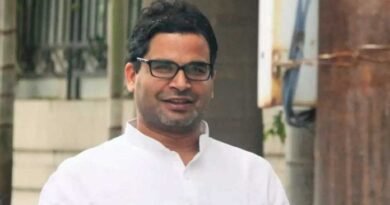Dhaka must learn to stand Hindus
Bangladesh should not forget that it would still have been a slave of its erstwhile western wing had the Indian armed forces not intervened
Foreign Secretary Harsh Vardhan Shringla has in a public statement implied that Indo-Bangladesh relations are excellent. On the other hand, the ISKCON has staged demonstrations at 150 temples across the globe in protest against the recent attacks on a temple as well as the murders of Hindus in Bangladesh. The demonstrations have been extended to outside private residences and other locations. A hundred and fifty countries have complained to the United Nations that Bangladesh should be asked to bring the lawlessness under control. The apparent contradiction is mysterious.
It is a pity that regardless of ideology, Bangladesh should treat Hindu temples and Hindus there in this manner. Have they forgotten that they would still have been slaves of their erstwhile western wing, but for the help and intervention by India’s armed forces?
What East Bengal — now Bangladesh — meant to Qaid-e-Azam Jinnah is reflected in the fact that he had never visited it before March 1948. When he did visit, he addressed the Dhaka University only to tell its students that Urdu would be the sole national language of Pakistan, angering his audience.
Jinnah arrived in Dhaka on March 19, 1948. On March 21, he warned a large crowd at the Dhaka Race Course, against what he called the forces of subversion conspiracy bent on destroying Pakistan’s unity. Feeble protests were heard from the crowd. Far louder voices of protest were to be heard only days later. The Qaid had through his Dhaka speech set East Bengal on a course that would lead, over the next 24 years, to the break-up of Pakistan and the rise of East Bengal as the independent Republic of Bangladesh.
Addressing a special convocation of Dhaka University at Curzon Hall on March 24, an imperious Jinnah made it abundantly clear that “Urdu and Urdu alone” would be the language of the State of Pakistan.
Jinnah continued, “Our enemies, among whom, there are still some Muslims, have set about actively encouraging provincialism in the hope of weakening Pakistan and thereby facilitating the reabsorption of this province into the Indian Dominion. Those who are playing this game are living in a fool’s paradise, but this does not prevent them from trying…” A sense of alienation between Jinnah and the Bengalis set in immediately with his departure for Karachi.
Evidently, Jinnah did not understand the psyche of the eastern wing. A Bengali, whether eastern or western, would rather give up his life than sacrifice his language. Overall, Bangladeshis can be estimated to be 65 per cent Muslim and 35 per cent Bengali in their outlook. For such people to be told that there is no Rabindranath Tagore or Qazi Nazrul Islam is nothing but sacrilege. Even today, the best Rabindra sangeet singer is Rezwana Choudhury Bannya, a Bangladeshi, who wears a sari and as well as a tika (mark on the forehead).
Regrettably, New Delhi’s understanding of Bangladesh is not much deeper. There are a few liberals — quite a few — who still yearn for their lost Pakistan. The majority swing between “Sonar Bangla” and “Ab-e-Zamzam” in Mecca, the circumambulation of which is essential while on the Haj. The Bangladeshi media too oscillates between “Aakaash Paataal” and “Aasmaan Zameen”. Another reason for the people of Bangladesh being confused is that they never aspired for a specific nationhood after the British withdrawal. They could have been part of a united India, or a part of Pakistan, or of an independent Bengal, which Fazlur Rahman, Sir Abdul Rahim and Sarat Bose were negotiating during 1946-47. As it happened, they first landed with Pakistan and then became Bangladesh in 1971. For years therefore, the people of Bangladesh felt like nouveau-independent. If they are asked to make up their mind and choose, they are likely to go the Islamic way. The hateful Pakistanis are thousands of kilometres away, whereas the Hindu Bengali is only a border across. They are jealous of him, because for centuries, they served as his serfs.
Sheikh Mujibur Rahman had a career with the Muslim League for several years after 1947. If his daughter Sheikh Hasina Wajed were to be driven to choose, she would have no alternative but to go for Islam. That would be the choice of Bangladeshis, not necessarily for God, but for their identity.
Moving from culture to geography, to Bangladesh’s east is Myanmar, with a well equipped and capable military. On the west is West Bengal in India; the north again is India, whereas to the south is the Bay of Bengal, dominated by India. Therefore, to conduct foreign policy from Dhaka is as difficult as anything can be. This is more so because the question is how useful can Bangladesh be to any big power. Its natural resources are limited. Traditionally, Bengal has been an agrarian area. Yes, the British did develop many industries, but only down the river Hooghly, notably jute, coal and iron. In other words, East Bengal did not obtain the benefit of development.
For its size, rising sea levels due to increase in global warming are an awkward disadvantage. The options for Dhaka are few; be friendly with Myanmar as well as other countries like Nepal, and make sure that there is no slip-up in India’s goodwill.
(The writer is a well-known columnist, an author and a former member of the Rajya Sabha. The views expressed are personal.)
Source: The Pioneer




